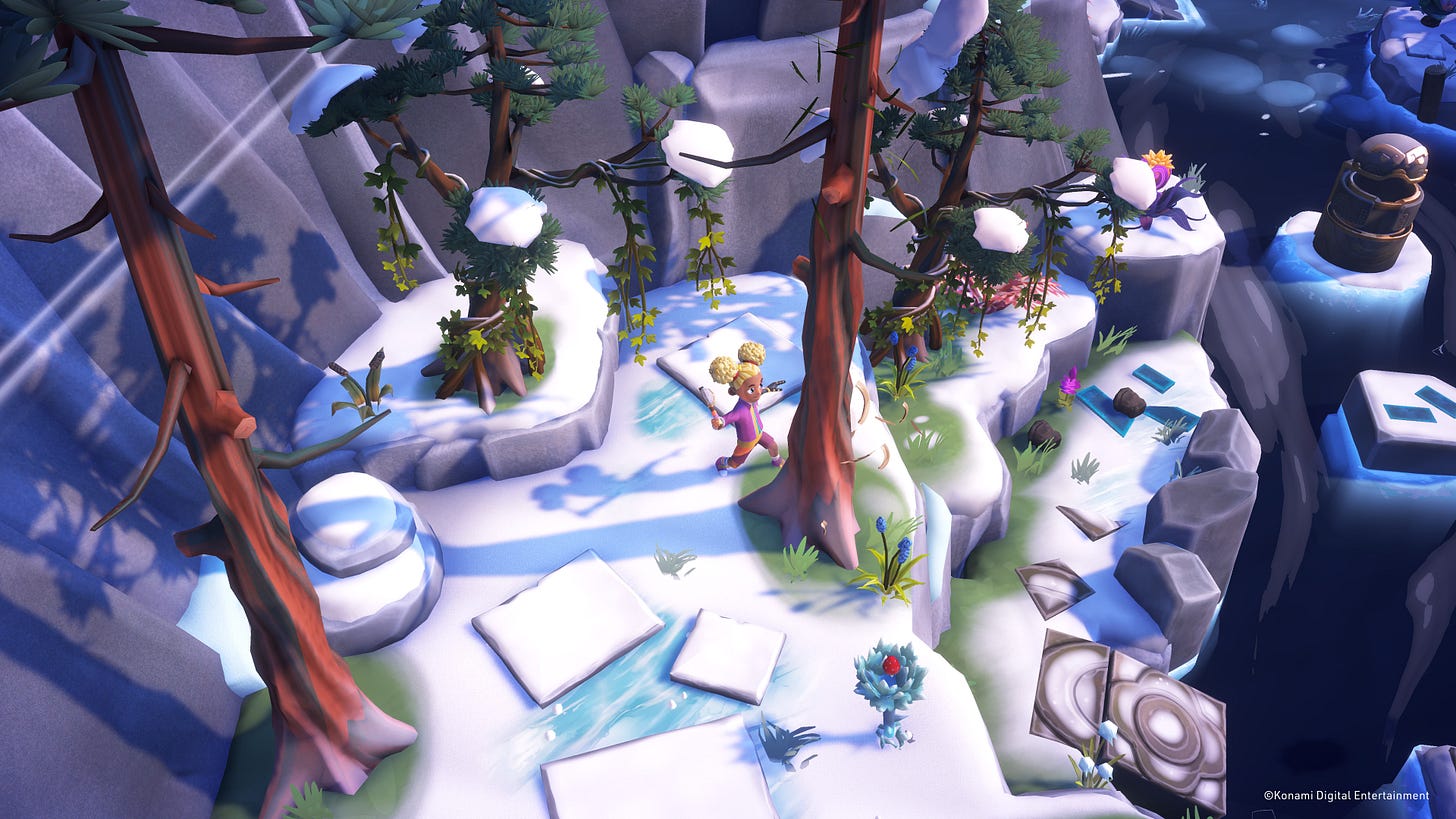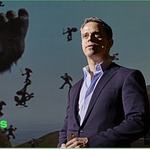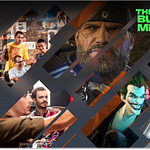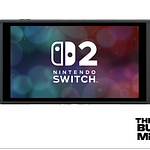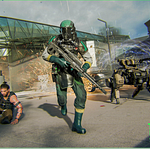Listen now on Apple, Spotify or YouTube
In This Edition
- Why is Unity making a game?
- Why Survival Kids?
- And why Nintendo Switch 2?
Welcome back! What a week ahead for the video game industry. Epic’s taking to the stage to chat Fortnite and Unreal Engine. We’ve got a whole console coming out on Thursday. And then Summer Game Fest kicks off in earnest, with an onslaught of announcements over the coming weekend.
I will be there to cover it all. And we have our own event in Los Angeles on Monday next week, with four live tapings of our Show (plus a bonus talk). Tickets are free for you dear readers, and if you’d like to come, here are the details.
But to kick this week off, I’ve caught up with the game developer behind the Switch 2 exclusive launch game Survival Kids… Unity.
Yep, that Unity.
Enjoy.
Unity is about to release its first ever video game, and it’s a Switch 2 launch title
There was so much to focus on from the reveal of Nintendo Switch 2, one noteworthy moment entirely escaped my notice.
It was related to the Switch 2 exclusive launch game Survival Kids. I know the franchise. I remember playing the original back in 1999 (it was called Stranded Kids over here). And I know the series found an audience on Nintendo DS under the name Lost In Blue.
During my cursory glance, this new Survival Kids seemed like a good fit for Switch 2. It’s a co-operative multiplayer game aimed at younger audiences, which makes it ideal for the GameShare and GameChat features that Nintendo are pushing.
But that was the sum total of my thoughts on the game. Until a few weeks later, when I found out who was developing it. Survival Kids on Switch 2 is being entirely made by Unity. It’s the game tech firm’s first internally developed video game.
“I'm part of Unity Studio Productions, and we've been helping Unity developers achieve their vision for a long time,” explains Survival Kids producer and Unity studio head Andrew Dennison.
“Whether that's helping with performance optimization, helping port to another platform or in some cases moving their game wholesale to Unity. So the ambition was to say: what's an even bigger production we could get involved with? And the answer to that is to build a whole game for a partner. That way we're testing even more of the engine. We’re literally able to test every single aspect. And we wanted to do it in an environment where we were a similar size, we had the same timescales, we had the same restrictions and pressures of our customers.”
Meanwhile, Konami Creative Director Richard Jones was looking into resurrecting an old Konami IP.
“Now, this wasn't necessarily Survival Kids at the time,” he tells us.
“Konami’s got so many great old IPs. Everyone knows about the big ones, and they're all being developed in the background. They're still active. But there are a lot of older IPs, and perhaps less well-known ones, that are such potent opportunities and mean a lot to a certain generation. A certain generation like me and Andy.”
Jones met with Unity at Gamescom 2022, which is where the collaboration officially started. But Unity also had the job of building a studio that Konami was happy to work with.
“Unity Studio Productions is big […] but we didn't have a single group of people that could cover every game development discipline,” Dennison explains. "So we picked a location where I was based in Stratford-Upon-Avon in the UK. It’s near a big center of game development. You have Lemington Spa with all the studios there and little bit further north companies like Rare. It was also already the offices where a lot of Unity's console platform teams were operating out of. All the Unity support for Xbox, PlayStation and Switch is done in Stratford-Upon-Avon.
“So we have the console platform teams on our doorstep. I then started building a small team. Game designers, artists, audio… we did all the music and sound effects internally. It was really to get a full range of skills so that we could legitimately go to a partner like Konami and say: We think we can do this, and we have the right team to achieve it.”
By why Survival kids?
“It’s a game that we'd both played and enjoyed,” Jones says.
“It was thematically interesting. The idea of kids on a desert island, there's something really romantic and fun about that. So when we have the opportunity to work together, it was something which we thought was ready for reinvention.”
He continues: “We had an idea of what we wanted this Survival Kids to be. We wanted it to be a social experience. We wanted it to be cross-generational. We wanted parents to be able to play with children, brothers and sisters to play together, you know, friends and family. So that was the idea, a survival game that everyone could play and it could be very accessible. And that was even before we had decided on this being a Switch 2 game.”
The ups and downs of making a Switch 2 game
To begin with Survival Kids was platform agnostic. Unity and Konami were aware of a new Nintendo console, but they didn’t know anything about it at that point. However, they did feel the game they were building would fit perfectly with Nintendo’s family audience.
“It was only as we got into Alpha stage when we started getting a bit more concrete information about what we now know as Switch 2,” Jones continues.
“By then, we'd learned a window when Switch 2 was going to come out that aligned with our development schedule, and it aligned with a lot of the gameplay aspects as well. That was the point when we had to double down and try and make this a Switch 2 launch title.”
There was one downside to launching a Switch 2 game, however. Despite this being a significant move for Unity, the team couldn’t tell anyone about it. Not even internally.
“We had to strip out one of our meeting rooms, and get rid of all the Zoom gear, get rid of all the cameras, and that's where all the Switch 2 dev kits lived in this hot cramped room.”
“It does feel significant, but because we're a launch title for Switch 2, we couldn't quite be as open about it internally as we wanted,” Dennison tells us. “For the last year and a half, as much as I've wanted to shout from the rooftops within Unity, and externally as well, I haven't been able to. In fact, the team hasn't been able to, and kudos to them for maintaining the secrecy behind this, because it's been challenging at times.
“But after the Switch 2 was announced and we showed Survival Kids for the first time, it's been great because we've been able to talk about it a lot more internally. We have a lot of people getting access to the project now across the engine team so they can validate more of the work they're doing against a real project. The source code is available to everyone within Unity that has a reason to access it, which is really powerful for us. We have a huge amount of test suites. We have a huge amount of projects that we do try and validate with. But having an absolutely modern multiplayer Switch 2 game as a test bed is hopefully valuable now and will continue to be valuable for Unity in the future.”
Dennison’s team had to follow strict rules when being sent the dev units.
“When Nintendo gets to the point where they're saying… ‘Hey, we want to send you hardware’, which of course is ludicrous exciting as a developer. It's what you live for. New Nintendo hardware. But it's overwhelmed by the importance of protecting that.
“So we had to strip out one of our meeting rooms, and get rid of all the Zoom gear, get rid of all the cameras, fit it out to a standard that Nintendo requires, and that's where all the Switch 2 dev kits lived in this hot cramped room. And we're all there hovering over the keyboards.”
The upside to developing a Switch 2 launch game is that Unity can show its customers its technology running effectively on the hardware, and Survival Kids also makes use of the console’s unique features. It uses GameShare (where players can share Switch 2 games with friends and family, even if they don't own the game) and GameChat (a Discord-like offering where up to 12 people can chat while playing, including on video).
“Unity is a huge product. It's complex. And every time a new platform's introduced, we need this broad set of tests, this broad way of validating,” he answers. “Technically just building a game for the new platform is going to exercise so much of that new code base of that new platform we're offering. And then of course, once you've got that stable and saying ‘okay, we can do this’, then you start to explore what's new. And that could be performance focused. It could be… we've got access to bigger CPU, bigger GPU, what can we do with that? How can we make sure frame rates are as high as it can be? And then once you get that covered, you say: okay, what else is available? That's where it starts to get really fun.”
Unity took the test approach seriously. The team Dennison built was designed to mimic that of its customers, and it partnered with a publisher to ensure it dealt with the same pressures other developers face, too.
“It’s something that so many of us at Unity have been working to for a long time,” he says. “And you have to start moving pieces around years before to get to this situation where you can do it in a sustainable way and a way where we are operating in a very similar manner to our customers.
“I'm delighted that we've managed to achieve it.”
He concludes: “We're going to talk about this game for a long time. There are a lot of lessons we can send to the community. There are a lot of events coming up where we can talk about it, and there are white papers, that kind of thing.
“[The community] might say ‘we know that’ or ‘we've been telling you that for years.’ But they'll hopefully say: ‘Hey, that's really interesting. I can use that.’ This is hopefully a long and fruitful sharing process with the Unity community.”
That’s it for today’s The Game Business Show and Newsletter. We’re back on Thursday with our next edition, and stay tuned to your inboxes over the next two weeks as we have a bumper schedule ahead. Thank you for reading!





